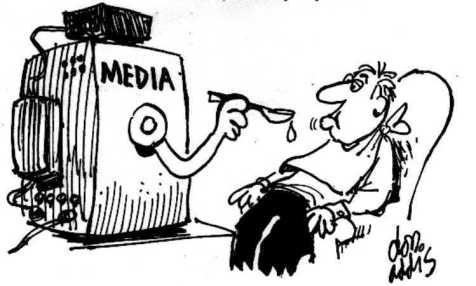
Since the rise of new media, the media academia has struggled to follow the new spectrum of possibilities. They had to reassemble almost every theory based on traditional media as new media changed the position of users so much. Throughout a few series of blogs, I would like to introduce briefly how these changes took place, by explaining both the original theory and the changes. Today, I’ll be starting from agenda setting theory.
<What is Agenda Setting?>
Primarily, agenda setting in media studies mean that a particular issue covered in news media becomes the topic of debate amongst the public. In other words, when the news media puts its focus on an issue, the public also puts its focus on the same issue. The process of this phenomenon has three steps. First, the reality happens. Then, the gatekeeper picks out information which they consider to be important. Finally, the media agenda is set, and the consumers also consider them important. In these three phases, the word gatekeeper takes a great involvement. Gatekeepers, in this context, refers to the news professionals who are in charge of producing news articles, videos, broadcasts, and so on. They pick out certain issues among overflowing contents that they believe to be important to share due to time and space constraints.
It is believed that this ‘gatekeeping’ impacts the public in two ways: cognitively and affectively. Cognitive effect of gatekeeping points out to the fact that the media user thinks about a particular issue portrayed in the news media, and affective effect adds to this to say that the news media gives away the tone in which how users think of the issue. In short, gatekeeping both triggers ‘what to think about’ and ‘how to think about.’
<What Has Changed?>
With the growth of social media and other digital media, level of interactivity has grown, which established a new research on the agenda setting theory. New media now requires new methods to measure and figure out the common agendas shared between media and public. Social networking services (SNS), in particular, led the media academia to the new theory of ‘public to public agenda setting.’
The public to public agenda setting states that new media connects, setting each other’s agenda. Since social media enables users to express their thoughts, people share what they believe to be important, becoming a gatekeeper themselves. This internet-based networks sets the common agenda for the public without any help from mainstream media, such as television and newspaper.
Agenda setting theory has changed because of the interactivity added to media. Yet, there are much more factors added with digital media’s appearance. What will be the next?
References
Mass Media Agenda Setting Theory – University of Twente
New Directions in Agenda Setting Theory and Research – McCombs and Shaw


Although I think most people are aware that something such as the common agenda exists, I do think many people are not aware of something such as public to public agenda setting. In my opinion, it is good to be aware of its existence and stay critical when acquiring information online.